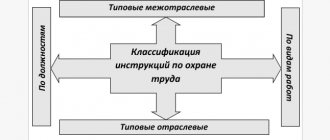The adaptation process in any field cannot be called easy, because it is woven from various difficulties, tricks, surprises, and forces people to leave their comfort zone, which cannot be pleasant. You need to understand that this is an absolutely normal and natural process, and the occurrence of discomfort is evidence that everything is going according to plan. Labor adaptation is a complex and lengthy process that requires a responsible approach not only from the employee himself, but also from those around him.
Social adaptation
Social adaptation is a very important point, as it determines the well-being of the individual. Getting used to people and society is not such a simple thing, but the psychological health of an individual depends on the ability to adapt to changing conditions and new personalities.
Social adaptation can be considered as a one-act or multi-act process. What does it mean? A person who has successfully integrated into society will feel comfortable in any group if their values, rules of behavior and moral standards are approximately the same. If he changes teams, then we will be talking, rather, about easy readaptation.
Let's imagine that a person grew up in a Russian village, studied at a rural school and worked all his life in the same environment. His values were shaped by this environment, and his habits correspond to the rules of survival among people like him. If this subject decides to give up everything and go to New York, then an incredible number of surprises will await him here: a new language, a new mentality, a different rhythm, currency, values, prices, requirements, landscapes... All this provokes the development of completely new habits, manners, perceptions, plunges a person into extreme stressful conditions.
Concept and types of personnel adaptation. Stages of the onboarding process
Types of adaptation
Labor adaptation is a multidimensional phenomenon that includes:
- social adaptation, i.e. obtaining information about the values, norms of the organization, its formal and informal groups, leaders, acquaintance and inclusion in the system of business and personal relationships in the team. The information is correlated with the employee’s past experience and value guidelines. The result of the adoption of group norms is the employee’s identification with the team or with one of the formal or informal groups;
- organizational adaptation, in which employees become aware of their role in the overall production process. This is achieved by becoming familiar with the peculiarities of the unit’s activities, its place in the overall organizational structure, operating mode, management system, as well as the functioning mechanism of the entire organization;
- professional adaptation, which is characterized by the development of a certain level of professional knowledge, skills, cooperation skills, the formation of the necessary qualities and a positive attitude towards one’s work;
- psychophysiological adaptation, i.e. adaptation to new mental and physical stress, sanitary and hygienic production factors, labor rhythm, etc.
There are two directions of labor adaptation: primary and secondary.
• Primary adaptation is carried out by young employees who are starting their professional activities for the first time and have no work experience.
• Secondary adaptation – adaptation of employees with certain professional experience who, due to various circumstances, change their place of activity or position.
In the context of the functioning of the labor market, the role of secondary adaptation increases. At the same time, it is necessary to carefully study the experience of foreign companies that pay increased attention to the initial adaptation of young workers. This category of personnel needs special care from the administration of organizations. Most often, professional adaptation is considered as the process of introducing a person to work within a certain profession, including him in production activities, assimilating conditions and achieving labor efficiency standards. However, adaptation cannot be considered only as mastery of a specialty. It also provides for the adaptation of the newcomer to the social norms of behavior operating in the team, the establishment of such cooperative relations between the employee and the team that best ensure effective work and satisfaction of the material, everyday and spiritual needs of both parties. Types of adaptation and factors influencing it are shown in Fig. 1 .
Rice. 1. Types of adaptation and factors influencing it
Stages of adaptation
The following stages can be traced in the process of labor adaptation:
- familiarization, i.e. obtaining information about a new situation, criteria for evaluating activities, norms of behavior;
- device, i.e. the new employee assimilating the core values of the organization while maintaining most of his own attitudes;
- assimilation, i.e. full adaptation of the employee to the group;
- identification, i.e. identification of the employee's goals with the goals of the organization.
In addition, there are four types of human behavior when included in an organization:
- The first type fully accepts the norms of behavior and values of the organization and tries to ensure that its actions do not conflict with the interests of the organization. The results of this person’s actions depend mainly on his personal capabilities and abilities and on how correctly the content of his role is defined.
- The second type does not accept the values of the organization, but behaves in accordance with the norms of behavior accepted in the organization. He is a good, but unreliable employee, capable of leaving the organization or committing actions contrary to its interests.
- The third type accepts the values of the organization, but does not accept the norms of behavior. Difficulties arise in relationships with colleagues and management. With a liberal attitude towards certain forms of employee behavior on the part of management, they find their place in the organization and work successfully.
- The fourth type does not accept the norms of behavior and does not share the values of the organization and therefore constantly creates conflict situations. Such people most often make life difficult for colleagues and can cause harm to the organization, but they are not completely unacceptable in it.
The adaptation period depends on many factors and can range from one to three years. At this time, a person, drawing conclusions from the consequences of his previous experience, consciously adjusts and changes his behavior. This is reflected in the fact that a new employee, learning his functional role, learns to place emphasis in the work he performs from the position of its importance for the organization.
Difficulties in adaptation or its disruption are usually called maladjustment. The consequences of maladaptation include destructive conflicts, indifference to the work performed, leaving the department or organization. In addition, an adaptation crisis may arise due to a significant discrepancy between knowledge and skills and the requirements of the position.
The results of adaptation are assessed by quantitative and qualitative indicators of labor, in relation to the employee’s attitude towards the organization, which is manifested in his orientation towards a change or maintaining a job, profession, position, or advanced training.
The concept of labor adaptation
Labor adaptation is a complex mutual process of a person’s adaptation to the work environment and the same environment to the individual himself. When a new employee starts work, he learns norms, rules of behavior, and a system of relationships within the team. At the same time, he learns to work effectively, masters new skills, and adapts to the regime.
Labor adaptation is a process; it combines social, professional, psychophysiological, organizational, economic, and cultural and everyday adaptation.
Some researchers consider labor adaptation as part of social adaptation.
Labor adaptation of personnel - how to plan it
The approximate adaptation plan will depend on:
- the required priority qualities of the employee;
- newbie positions;
- features of conducting business in the company.
The action program of the company’s management in order to plan an adaptation model consists of going through the following points:
- Organization of the department, provision of a new position, assigning responsibilities for adaptation to a specific employee.
- Identification of mentors from among experienced employees in various departments.
- Distribution of specific tasks among authorized employees.
- Determining the communication system and hierarchy (to whom mentors report).
- Informing the entire team about labor adaptation.
- Establishing feedback (a newbie should be able to ask for help at any time).
Types of labor adaptation
Professional adaptation is the development of professional skills, improvement of knowledge that is necessary to perform one’s work in a particular organization. This type of adaptation includes the development of ethical and moral standards, the ability to solve complex professional dilemmas.
Social adaptation lies in the ability to form positive relationships with members of the work team and establish external labor contacts.
Psychophysiological adaptation is getting used to physical activity, the convenience of the workplace and space, the distance of work from the place of residence and planning your time accordingly, etc.
Organizational is getting used to the work regime and working hours.
Economic adaptation is the employee’s familiarization with the economic mechanisms of the organization, getting used to the size and mode of payment for his work.
Cultural adaptation is the participation of a new employee in various events that are not included in his working hours and direct responsibilities.
Labor adaptation of personnel - the main problems of newcomers
According to many studies, there are several main negative aspects that make a new employee feel uncomfortable in a new workplace. These include the following objective factors:
- lack of practical experience;
- constraint in front of new colleagues and superiors;
- inability to navigate in a new environment;
- lack of organizational knowledge.
But that’s not all – there are also a number of subjective factors that further complicate the process of addiction
:
- inability to “become one of our own” in a team (lack of desire to get close to other employees, fear of being rejected and misunderstood, natural embarrassment);
- lack of contact with management (fear that management will not like it, antipathetic director);
- fear of not earning respect in the new team;
- fear of losing a job, too strong a desire for quick career growth;
- fear of not being able to do the job, of appearing incompetent.
Stages of labor adaptation
The first stage is considered to be familiarizing the new employee with the enterprise as a whole, with the norms of behavior, with how certain actions are evaluated.
The second stage is the new employee’s adaptation to the new internal laws of the organization and team, but at this stage he is still guided by his personal or previously acquired attitudes and rules.
At the assimilation stage, a new employee enters the team. At this stage, a person already identifies himself with this group.
And the last stage is identification, which is characterized by the coincidence of the goals of the new employee and the organization.
Adaptation goals:
- Cost reduction - the faster an employee integrates into the work environment, the faster he will work effectively.
- Reduce employee turnover: If a new employee feels uncomfortable in the workplace, he may start looking for a new job.
- Saving time for the immediate manager: adaptation according to a specific algorithm helps different departments of the organization interact better to immerse the newcomer in the work environment.
- Reducing the stress level of a new employee.
- Increasing employee job satisfaction.
How long does adaptation take?
There is no clear answer to this question, since there are different levels of complexity of the duties performed, different methods of adaptation of new employees in the organization itself, types of temperament of the employee himself, his psychotype, work experience and attitude towards work.
Some companies are interested in quickly adapting a new employee, so they use various methods that help a person quickly integrate into the work process and work productively. These same organizations are least interested in staff turnover, so they provide not only professional but also personal growth, pay attention to the arrangement of the employee’s workspace, choose the most suitable schedule for him, etc. In such cases, the adaptation process is the least painful and can last from two weeks to one month.
Budgetary organizations are less likely to be interested in quickly adapting a new employee, and the process itself is the result of the interest of the team and administration itself.
Answers to common questions about what constitutes labor adaptation of personnel
Question #1:
If adaptation is a psychological and biological mechanism built into a person, then adaptation to a new job occurs on its own. For what purpose is labor adaptation of personnel carried out in this case?
Answer:
A person only needs a certain amount of time, motivation, the will to change and their natural capabilities to adapt to a new workplace. However, the adaptation process itself takes a long time, and therefore it is expensive for the employer. Therefore, labor adaptation of personnel is carried out, which helps to minimize and facilitate the process of getting used to the new environment. The need for labor adaptation is evidenced by statistics - 9 out of 10 employees who quit without working at the company for a year decided to leave their job in the first days of their service.
Question #2:
How long does it take for a new employee to fully adapt?
Answer:
Self-adaptation is difficult and ends a year after hiring. If you apply a work adaptation program, the adaptation improves and takes several months.
Signs of an adapted employee
Often people call the process of labor adaptation with the understandable word “joined”: joined the team, joined the work. When a person fulfills his direct duties without much difficulty, and being in a team does not cause him a feeling of discomfort, it can be argued that he is adapted.
What does “without much difficulty” mean? There are professions and positions where results are impossible without a lot of effort. There are situations that are far from the template, and their implementation requires a creative approach... The main difference between an employee who has successfully completed social and labor adaptation is his confidence that he will be able to resolve all issues (even if at the time of their occurrence he does not have concepts about the solution path).
A sign of social adaptation in a team is not the complete absence of conflicts, but the ability to resolve them constructively. Productive activity should be accompanied by disputes and discussions, but not turn into confrontation. A socially adapted employee knows how to defend his point of view, including if it does not coincide with the opinion of the masses, but at the same time maintain friendly and positive relationships with group members.
Types of adapted workers
An adapted employee is one who has managed to accept the company’s core values, rules, requirements and norms:
- the main ones
are those that are directly related to production processes; - secondary
– those related to communication and behavior within the company.
There are 4 types of employees who have undergone adaptation, depending on what specific standards and to what extent they were accepted:
- "Adapted"
. Such an employee adequately perceived both the main and secondary norms of the company. Managers strive to obtain such an employee. - “A good person is not a profession
. The type of employee who fully subscribes to secondary norms, but has no success in adopting core values. This is a professionally weak employee who has no complaints about corporate culture, discipline, or communication with colleagues. It is recommended to provide additional training to such personnel, since future losses and termination of employment are possible. - “A good face on a bad game
. The employee has successfully accepted the company's core values, but he still rejects the secondary norms. This is an excellent specialist whose work has no complaints, but it is difficult for him to join the team. Such “loners” should be developed; their assignments should not depend on colleagues, and they should not be included in team work. - "That's not mine".
The newcomer did not accept either the main or secondary values. The employee has difficulty learning, copes poorly with tasks, does not find contact with colleagues, and feels uncomfortable. Adaptation has not occurred, and therefore the employee will soon leave the workplace.
Labor activity as the main method of adaptation
If you think about it, the process of introducing a person into any society occurs through work. Be it mental or physical skills, without them an individual cannot be an effective unit in any given society.
The learning process can also be safely equated to work activity, since it requires significant mental and sometimes physical effort of a person. Having a certain amount of knowledge and skills, a person speaks the language of the profession. Adaptation in work activity is one of the most effective ways to integrate into society.
Stages of adaptation
The adaptation period itself can be formally divided into three stages
Familiarization stage
At this stage, the newly arrived specialist learns the organizational goals and objectives of the enterprise and the position he occupies, gets acquainted with the environment and the team, compares all this with his expectations from the new place of work and his formed opinion about the company. After comprehending all this, a person must clearly understand for himself whether this position is suitable for him or whether he should look for another place.
Management, for its part, also carries out work to evaluate the new employee:
- makes sure that the decision to hire this person is correct;
- does everything possible to quickly integrate the specialist into the team and transition him to the full performance of his professional duties;
- reveals the likely working potential of the hired employee;
- comes to a final conclusion about professional skills and determines the specialist’s further career advancement during the work process.
All these issues are resolved during the newcomer’s internship or probationary period. At the end of the period, a decision is made on the suitability of the employee for the position he occupies.
Adjustment stage
This period can take a different period of time - from one month to a year. Its duration depends on the assistance provided to the new employee by management, staff, co-workers or a staff psychologist. During this period, the newcomer must join the team and adapt to it.
Fusion stage
A period of complete acclimatization begins, a person must clearly understand and fulfill his duties, be an equal member of the work team and outline for himself further prospects and goals for successful work.
Identification
At this stage, the specialist’s personal goals are closely intertwined with the goals of the organization, enterprise or firm. In this case, three types of workers are distinguished: indifferent, partially identified and completely identified. The backbone of any organization is made up of completely identified employees. Mostly they are professionals in their field, responsible and serious people.
Some advice for a new employee
- Don't be afraid to make mistakes. During the period of familiarization with your profession in the workplace, small and large gaps should happen. Make an effort to quickly master the necessary skills, but do not strive to do everything primly perfect. Why? Everything is very simple. Firstly, by showing the maximum of your capabilities in the first days, you set a high bar for yourself, and if you lower it even a millimeter, you will seem like a loser or an emotionally burnt-out employee.
- Don't try to please every member of the team and everyone will like it. Many new employees experience stress during their first days at work; in order to drown it out, they try to acquire a support group. One of the effective ways is to help everyone. In two weeks, people will get used to your services and any refusal will be perceived as an act of protest. There can be no talk of any full adaptation of the employee in the future.
- The other extreme is to show your character and get into trouble over every little thing. Such a personality immediately becomes surrounded by myths and hostility from employees. If a new employee causes fear or discomfort among others, then sooner or later measures will be taken to remove this “foreign body” from the organization.
Common mistakes
Error:
The company's management carried out job adaptation for the employee. As a result, the employee fit into the team perfectly, began to communicate with colleagues, accepted labor discipline and rules of conduct in the workplace. From a professional point of view, the employee is weak. The bosses believed that later the newcomer would begin to do the job better.
A comment:
For such employees, it is advisable to re-train production processes, otherwise the employee will not cope with the job and will distract other subordinates.
Error:
The management of the enterprise does not dare to incur time and financial costs in order to carry out labor adaptation of personnel. The company requires a large number of workers.
A comment:
Enterprises that need a large number of workers should engage in labor adaptation in order to “fix” newcomers in the workplace and not struggle with staff turnover.
Labor adaptation in prisons
Many researchers call the labor adaptation of an employee at an enterprise one of the types of social adaptation. It is noted that this is a two-way process, since consensus is sought between the person and the organization in order to reduce the adaptation process to a minimum. The more successful the adaptation, the sooner the employee will begin to act fruitfully. The goal is to quickly receive a product or service.
Labor adaptation centers for convicts pursue slightly different goals. Of course, the process is accompanied by both social and psychophysiological adaptation, since the individual has to join the society of convicts and get used to a very harsh regime. Labor adaptation in places of deprivation of liberty is of a corrective nature. It would not be entirely correct to use the expression “successful adaptation of prisoners,” since a person does not have to adapt to such conditions, he only has to change himself and learn a lesson.
If we take the example of the film “The Shawshank Redemption”, we can see that successful adaptation of prisoners still exists. This takes not two weeks or two years, but decades. The thing is that with age, a person’s ability to adapt decreases, and any change in conditions, for the better or for the worse, requires flexibility of the psyche and perception.
Find a person - create a specialist
By the time an employee starts work, a lot of money, time and effort have been spent on him.
It is assumed that adaptation costs should be significantly less than searching for a new employee.
The first day of work is an important milestone. Now the exam is self-administered,
It is from the employee that initiative, creativity, and exertion of all forces are expected. American psychologists consider a change in job to be the third most stressful factor, located on the list immediately after the death of a loved one and divorce from a spouse.
The behavior of the head of the company, immediate supervisor, colleagues in the department and employees associated with the newcomer in the process of production activities is less regulated. Meanwhile, successful entry into a new environment is possible only if their actions represent a well-thought-out and working system.
Career guidance
Career guidance and labor adaptation are two interrelated concepts. The first is aimed at young people and those looking for work to make it clear: what type of work is suitable for them, what kind of workload they can withstand, determine their area of interest and areas of competence.
If a person does not have the ability or desire to do some kind of work, then adaptation will be sluggish and long. An employee can perform another type of activity at a high level, but this work may turn out to be too energy-consuming or morally difficult for this person, which will lead to rapid burnout.
Career guidance is also necessary for a person to soberly assess his abilities, since everyone can cross-stitch, but not everyone can withstand this monotonous work for 8 hours a day.
There are individuals who manifest themselves in monotonous work, and there are those who are effective in variety. Each new activity arouses their enthusiasm and desire to bring rational suggestions.
Personnel adaptation methods
Managers who realize that the basis for the successful work of an organization is a strong workforce, implement effective adaptation programs that involve a number of activities designed to form two types of motivation in newcomers: external (economic) and internal (personal).
Everything is clear about economic motivation. The employee must receive financial remuneration that corresponds to his professional level, quantity and quality of labor expended. Bonuses, bonuses and other one-time incentives are also very effective - they increase employee loyalty to the company.
Internal (personal) motivation is the employee’s desire to grow and develop within the organization. The following tools help to form such motivation:
- Briefing. A beginner will be able to get into the work process faster if an experienced employee or a specially trained instructor explains and demonstrates the necessary work techniques;
- Mentoring. This is a traditional method of vocational training, widely used throughout the world. The newcomer is assigned a competent mentor who supervises his work. In the first days, the mentor can meet with the newcomer every day, gradually introducing him to the situation, taking an interest in his achievements, helping him cope with difficulties and leveling possible conflicts;
- On-the-job training. The method is distinguished by its practical orientation. An employee, under the guidance of experienced colleagues, becomes closely acquainted with his production functions, gradually taking on solving increasingly complex problems. The method is ideal for mastering skills for performing everyday work, but it is sometimes insufficient for developing the employee’s potential and developing new professional experience. For this reason, off-the-job training activities are often more effective;
- Educational courses, trainings and seminars. These forms of training are aimed at developing in an employee certain qualities and skills that will allow him to solve production problems more effectively. There are many different options for conducting such events - classroom training, webinar, etc.;
- Coaching. Coaching aims not at direct training, but at maximizing the full potential of the employee to master new horizons in development. A coach teaches how to move towards a goal and solve larger problems;
- Corporate parties, outdoor recreation and other non-work events. They provide an opportunity to meet colleagues in a non-work environment, which simplifies and speeds up the process of entering a new social environment.









